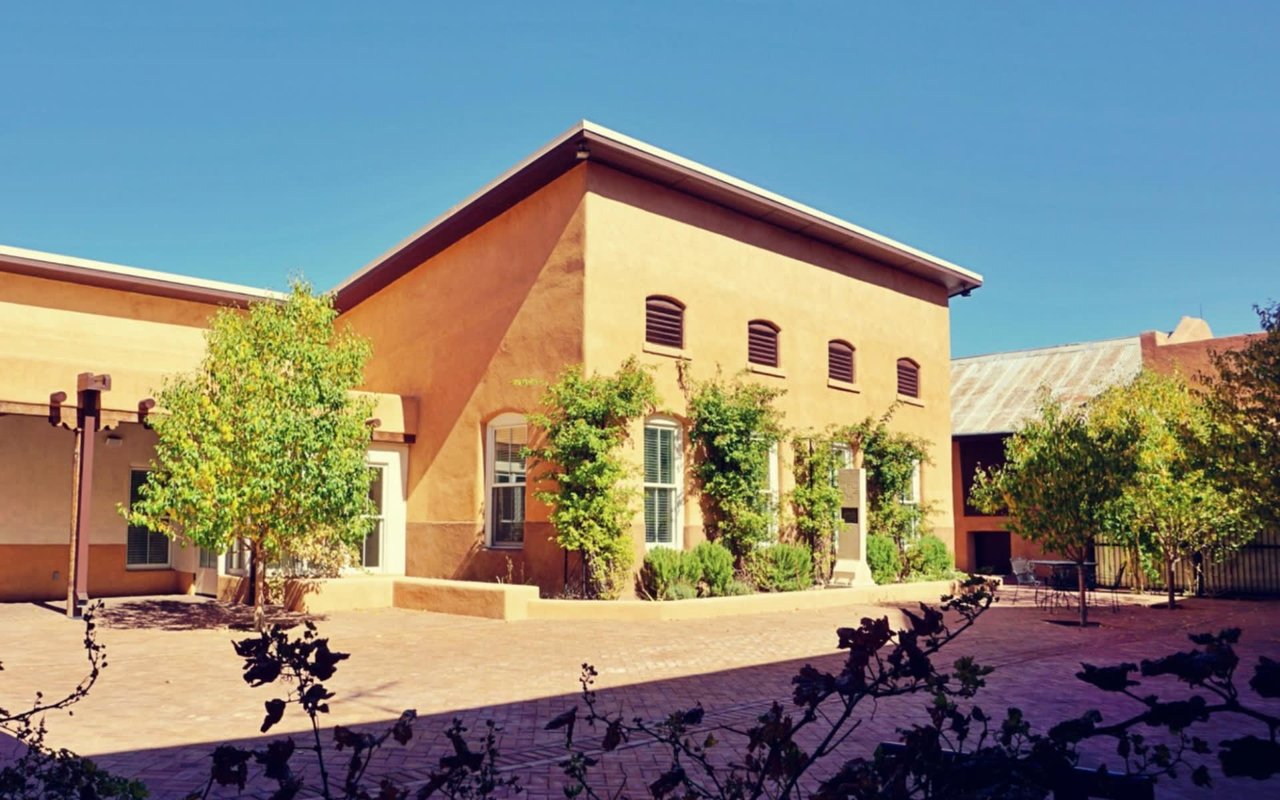Albuquerque, New Mexico, seamlessly blends history, culture, and architectural diversity. From ancient pueblos to contemporary structures, the city’s architectural landmarks tell the story of a region that has been inhabited for centuries and continues to evolve. This guide unveils the most notable architectural landmarks in Albuquerque, New Mexico, highlighting their historical significance and unique architectural styles.
Old Town Albuquerque: The Heart of History
Old Town Albuquerque, founded in 1706, is the historic heart of the city. The area is a treasure trove of Spanish colonial architecture, with its central plaza surrounded by adobe buildings, museums, shops, and restaurants. The San Felipe de Neri Church, built in 1793, is a testament to the enduring legacy of Spanish colonial architecture. Its thick adobe walls, wooden vigas (beams), and bell towers reflect the traditional building techniques in the early settlement.
The KiMo Theatre: Art Deco with a Southwestern Twist
One of Albuquerque's most distinctive architectural landmarks is the KiMo Theatre. Opened in 1927, the KiMo Theatre is a unique example of Art Deco architecture infused with Pueblo and Native American design elements. The theater's facade features ornate terracotta detailing, including Native American motifs and symbols. Inside, the KiMo boasts murals, chandeliers, and fixtures that celebrate the cultural heritage of the Southwest. The KiMo Theatre is a visual delight and a cultural hub, hosting a variety of performances and events.
Albuquerque Civic Plaza: Modernist Vision
The Albuquerque Civic Plaza is a central gathering space in the downtown area surrounded by notable examples of modernist architecture. The Plaza is flanked by the Albuquerque Convention Center, whose design emphasizes clean lines, functional spaces, and integration with the surrounding urban landscape. Nearby, the Albuquerque Plaza, the tallest building in New Mexico, adds to the modernist aesthetic with its sleek, glass-covered facade.
The University of New Mexico: A Campus of Architectural Diversity
The University of New Mexico (UNM) campus in Albuquerque showcases architectural diversity, with buildings representing a range of styles from Pueblo Revival to Brutalist. The Zimmerman Library, designed by John Gaw Meem in the Pueblo Revival style, is one of the campus's most iconic buildings. Meem, often referred to as the father of Santa Fe style, incorporated elements such as vigas, canales, and adobe-like stucco to create a building harmonizing with the Southwestern landscape.
In contrast, the UNM campus also features the distinctive Brutalist architecture of the Dane Smith Hall and the Humanities Building. These buildings, characterized by their raw concrete construction and minimalist design, represent a different era of architectural thought and starkly contrast the more traditional styles on campus.
In contrast, the UNM campus also features the distinctive Brutalist architecture of the Dane Smith Hall and the Humanities Building. These buildings, characterized by their raw concrete construction and minimalist design, represent a different era of architectural thought and starkly contrast the more traditional styles on campus.
Albuquerque Museum: Art and History in a Contemporary Setting
The Albuquerque Museum, located in the Old Town area, is a contemporary architectural gem that houses an impressive collection of art and historical artifacts. The museum's design blends modern lines with materials that pay homage to the region's architectural traditions. Large windows and open spaces create a welcoming atmosphere, while the use of local stone and metal ties the building to its Southwestern roots. The museum's outdoor sculpture garden further enhances its architectural appeal, providing a serene space for visitors to enjoy.
The National Hispanic Cultural Center: A Fusion of Cultures
The National Hispanic Cultural Center (NHCC) is another significant architectural landmark in Albuquerque. It is dedicated to the preservation and promotion of Hispanic culture. The Center's design blends contemporary and traditional Hispanic architectural elements. The NHCC complex includes theaters, art galleries, and a research library, all designed to foster a deeper understanding and appreciation of Hispanic heritage.
Sandia Peak Tramway: Engineering Marvel with Scenic Views
While not a building, the Sandia Peak Tramway is an architectural and engineering marvel that offers breathtaking views of Albuquerque and the surrounding landscape. The tramway, which opened in 1966, spans 2.7 miles and ascends to the 10,678-foot peak of the Sandia Mountains. The tramway terminals and support structures were designed to blend with the natural environment, using materials and colors that complement the rugged terrain. The ride itself provides a unique perspective on the region's geology and urban development, making it a must-see landmark.
Discover Your Dream Home in Albuquerque
Albuquerque, New Mexico, is a city rich in architectural diversity, where historic adobe structures stand alongside modernist and contemporary designs. Each landmark tells a part of the city's story, from its indigenous roots and Spanish colonial past to its vibrant present. Exploring Albuquerque's architectural landmarks offers a journey through time and a deeper understanding of the cultural and historical forces that have shaped this unique city. Whether you’re an architecture enthusiast or simply a curious traveler, Albuquerque's buildings and structures provide a fascinating glimpse into the soul of the Southwest.
Ready to experience Albuquerque’s architectural beauty and cultural richness for yourself? Whether you are drawn to historic adobe residences, contemporary downtown condos, or charming neighborhoods, don’t miss the opportunity to make Albuquerque’s unique architectural heritage a part of your everyday life. Contact The Lovely Home Company today to find your perfect home amidst this vibrant city’s stunning landmarks.
Ready to experience Albuquerque’s architectural beauty and cultural richness for yourself? Whether you are drawn to historic adobe residences, contemporary downtown condos, or charming neighborhoods, don’t miss the opportunity to make Albuquerque’s unique architectural heritage a part of your everyday life. Contact The Lovely Home Company today to find your perfect home amidst this vibrant city’s stunning landmarks.




